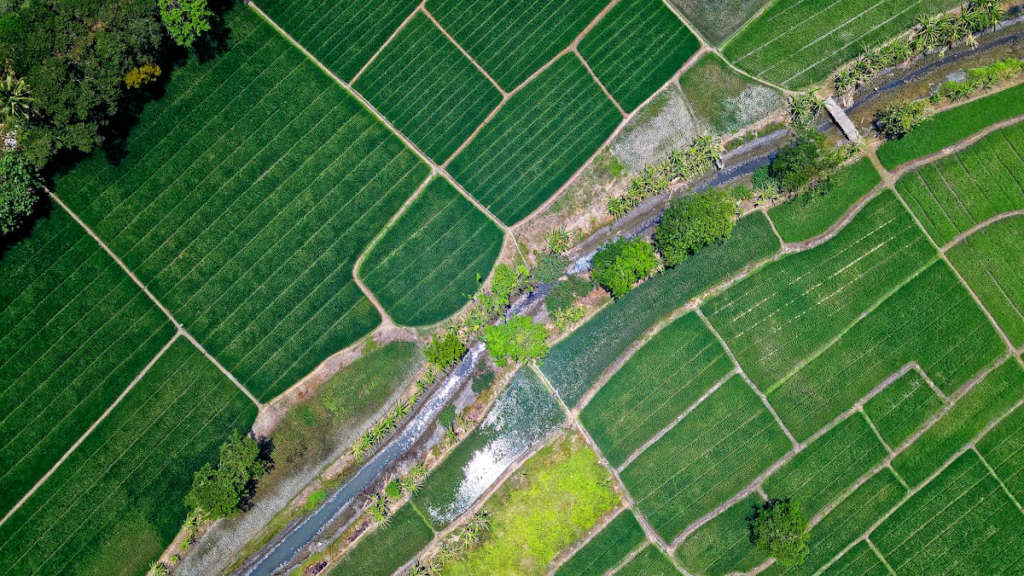Urban spaces are rapidly evolving, and the need for sustainable living solutions has never been greater. Innovative approaches to food production within city confines can transform our urban landscapes. The rise of new urban farming solutions enables communities to reconnect with nature while addressing food security and environmental challenges. By embracing these methods, we can cultivate not only plants but also a sense of community resilience and well-being.
Main Points
- Understanding the importance of urban farming solutions for sustainable living.
- Exploring various innovative methods, including vertical gardens and rooftop farms.
- Fostering community engagement through local food initiatives.
- Assessing the environmental benefits of integrating greenspaces in urban areas.
- Supporting policies that promote urban agriculture and community gardens.

Harnessing Technology: Vertical Farming as a Game-Changer for Urban Agriculture
As urban populations continue to soar, the need for sustainable food production has never been more critical. The rise of urban agriculture has become a focal point for addressing food security in densely populated areas. Among the innovative solutions emerging in this space, vertical farming stands out as a revolutionary approach to cultivation. This method, which utilizes vertical space for growing crops, not only maximizes yield but also minimizes the environmental impact of traditional farming.
The Advantages of Vertical Farming
Understanding the benefits of vertical farming can illuminate why it’s being hailed as a potential savior for modern agriculture. Here are some notable advantages:
- Space Efficiency: By utilizing vertical structures and compact hydroponic systems, urban farms can produce significant quantities of food within limited square footage.
- Resource Management: Vertical farms often employ advanced technologies like LED lighting and climate control, which can reduce water consumption by up to 90% compared to traditional farming.
- Local Food Production: They facilitate the production of fresh produce in close proximity to consumers, which reduces transportation costs and carbon emissions.
Technological Innovations Driving Change
At the heart of vertical farming is an array of sophisticated technologies. These innovations are not merely add-ons; they are essential components that drive the efficiency and productivity of urban farms. Automation, for example, plays a significant role in maintaining optimal growth conditions. Sensors monitor humidity, temperature, and nutrient levels, ensuring that plants thrive.
Moreover, data analytics allows farmers to gather insights on crop performance and environmental conditions. This can lead to more informed decision-making and improved crop yields. However, one might wonder if the reliance on technology could create complications, like technical failures or data discrepancies, that might disrupt operations. These are valid concerns, yet the benefits often outweigh the drawbacks when approached thoughtfully.
The Future of Urban Agriculture
With increasing interest in sustainable food systems, vertical farming is poised to redefine the landscape of urban agriculture. This transformation is not just a trend; it’s a promising vision for the future of food production in cities. The integration of technology in farming offers a path forward that aligns with both environmental goals and urban living.
In conclusion, vertical farming represents a significant leap forward in how we approach agriculture in urban environments. While challenges remain, the potential for enhanced food security, reduced environmental impact, and more sustainable practices is undeniably compelling. As we harness technology and innovation, we lay the groundwork for a more resilient agricultural system in our cities.

Community Engagement: How Urban Farming Initiatives Foster Sustainable Neighborhoods
Urban farming has emerged as a significant solution to various challenges faced by modern cities. It not only provides fresh produce but also plays an essential role in fostering community engagement. This interaction goes beyond mere agricultural practices; it nurtures relationships, enhances awareness of sustainability, and inspires residents to take action in their neighborhoods.
The Role of Community in Urban Farming
At its core, urban farming is a communal effort. It thrives on the active participation of local residents who contribute to planning, planting, and maintaining these green spaces. Such participation fosters a sense of ownership among community members. When individuals collaborate in a shared goal, they learn from one another and build trust. This connection is pivotal in creating vibrant, sustainable neighborhoods.
Environmental Benefits of Urban Gardening
Urban farms are not just aesthetic enhancements; they actively contribute to environmental sustainability. By cultivating food locally, communities reduce their carbon footprint associated with food transportation. Also, urban gardens can help filter rainwater, reduce heat in densely populated areas, and provide habitats for wildlife. The ecological benefits are clear, but the social advantages are equally profound.
Challenges and Opportunities
While the potential for urban farming is vast, challenges remain. Some residents might feel marginalized or question the purpose of urban farming initiatives. However, this provides an opportunity for dialogue. By involving skeptics in the process, organizers can demystify urban agriculture and illustrate its benefits.
Moreover, support from local governments is often crucial. Policies that promote urban farming can encourage more people to get involved. Incentives, such as grants for community gardens or educational programs in schools, can amplify the impact of these initiatives.
A Taste of Community
Urban farms often host events that transform these spaces into communal gathering points. Cooking classes, farmers’ markets, and potluck dinners serve as platforms to share knowledge and foster relationships. Such events remind us of the importance of community engagement in building sustainable practices. When people gather to enjoy local produce, they cultivate not only food but also friendships.
Conclusion
In conclusion, urban farming is more than just a trend; it is a vital movement that promotes sustainability and strengthens community ties. Urban farming initiatives create a supportive environment where individuals collaborate toward a common goal—this strengthens the fabric of neighborhoods. As more cities adopt these practices, the message becomes clear: sustainable neighborhoods can thrive when we engage with one another and invest in our local environments.
| Benefit | Community Impact |
|---|---|
| Local Food Production | Improves access to fresh produce |
| Environmentally Friendly | Reduces carbon footprint |
| Social Cohesion | Strengthens community ties |
As the concept of urban farming continues to grow, we must remain open to its evolution. Every garden cultivated is a step toward a more sustainable future and a testament to the power of community engagement.

The Future of Food Security: Integrating Urban Farming into City Planning and Policy
The issue of food security has become increasingly pertinent in our contemporary society. As urban populations grow, the challenge of providing sufficient, nutritious, and readily available food intensifies. This is where integrating urban farming into city planning and policy emerges as a vital solution.
Understanding Urban Farming
Urban farming is not merely a trend; it represents a pivotal shift in how we think about food production. It encompasses a range of practices—from community gardens to vertical farms located within the heart of cities. Such initiatives not only provide access to fresh produce but also promote sustainability and reduce the carbon footprint associated with transporting food over long distances. However, the true potential of urban farming can only be unlocked when it is systematically incorporated into the broader framework of city planning and policy.
Challenges in Implementation
Despite the evident benefits, there remain considerable challenges. Many city planners are hesitant to repurpose land for agriculture, fearing that it might detract from other urban developments. Moreover, regulatory frameworks often lag behind innovation, creating bureaucratic obstacles for aspiring urban farmers. This dissonance can lead to frustration among community members who see an urgent need for local food sources. To mitigate these concerns, policymakers must embrace a flexible approach that welcomes innovation while addressing the needs of various urban stakeholders.
The Role of Policy in Urban Farming
Effective policy measures are essential to nurture urban farming. Incentives, such as tax breaks for urban farms or grants for community-led initiatives, can encourage participation. Furthermore, educational programs on sustainable agriculture can empower residents. This is particularly important because a knowledgeable community is often more engaged and supportive of urban farming initiatives. Policies should also include land-use regulations that facilitate the establishment of urban farms, ensuring they do not conflict with existing urban developments.
The Future of Food Security
Looking ahead, the integration of urban farming into city planning may not only enhance food security but can also cultivate a culture of sustainability. When neighborhoods are designed with food production in mind, they can flourish in ways that traditional planning methods overlook. The potential for urban farms to act as social hubs cannot be understated, bringing together residents from diverse backgrounds and fostering community spirit. However, achieving this vision requires a concerted effort from all stakeholders involved in urban governance, including planners, policymakers, and the public.
Ultimately, the future of food security hangs in the balance, resting on our collective ability to integrate urban farming effectively into our city landscapes. We must strive to rethink our approach, facilitating innovative practices that reflect the needs of our growing urban populations. If we can navigate these complexities, we might just see a transformation in how cities understand and provide for their food security needs.
Conclusion
In recent years, urban farming solutions have emerged as a beacon of hope within our cities. These innovative practices not only address food security but also foster community engagement and sustainability. They transform neglected spaces into vibrant gardens, providing fresh produce to urban dwellers. Moreover, these solutions help raise awareness about the importance of local food systems. While challenges remain, the potential for urban farming to create a greener, healthier urban environment is undeniable. By embracing these practices, we can cultivate a sense of community and responsibility toward our shared spaces. In summary, urban farming represents a powerful movement that can reshape our cities for the better.
Frequently Asked Questions
What are urban farming solutions?
Urban farming solutions refer to innovative agricultural practices and technologies designed to grow food in urban environments. This can include rooftop gardens, vertical farms, community gardens, and hydroponics systems, aimed at increasing local food production and sustainability.
How can urban farming benefit communities?
Urban farming can benefit communities by providing access to fresh, locally-grown produce, reducing food deserts, promoting sustainability, and fostering community engagement. It can also create green spaces, improve air quality, and support local economies.
What resources do I need to start an urban farm?
To start an urban farm, you will need access to suitable land or space, basic gardening tools, seeds or seedlings, soil or growing mediums, and water. Additionally, knowledge about urban agriculture techniques and local regulations is important for success.